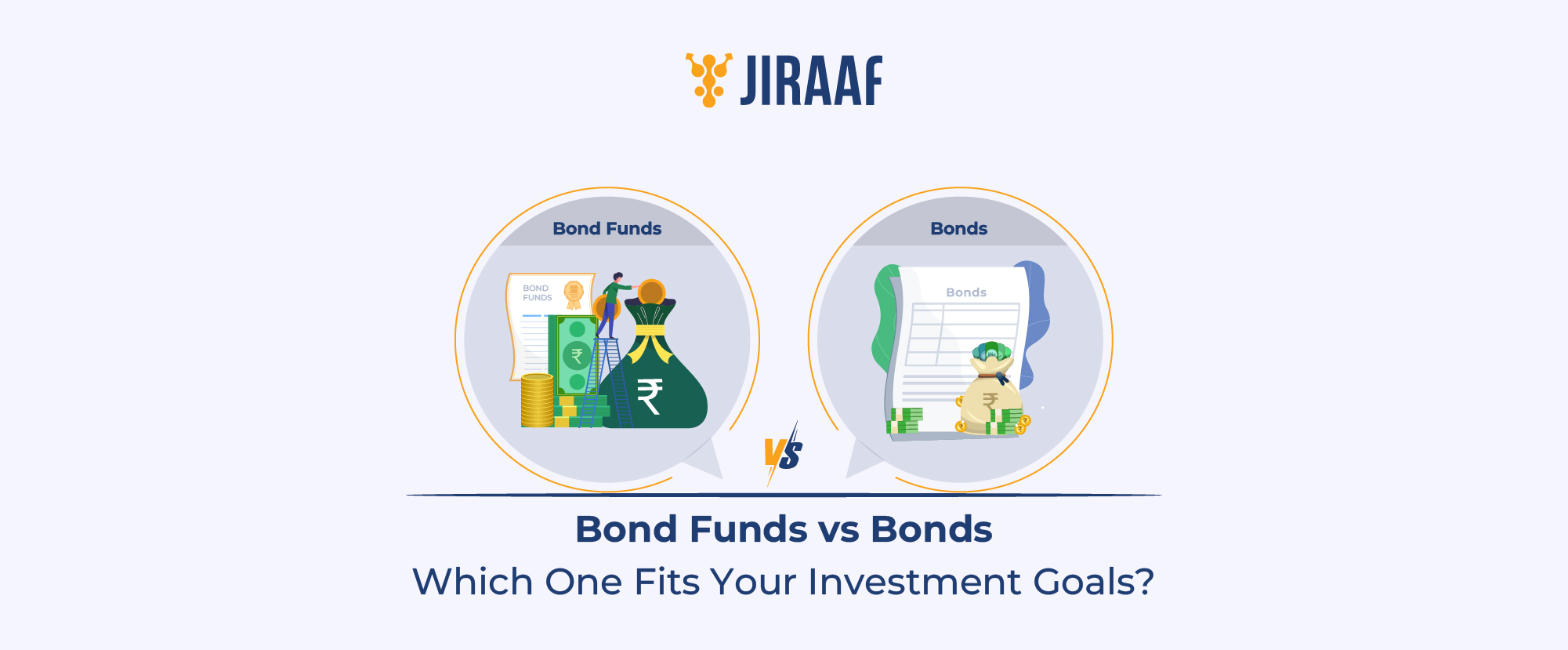When it comes to money, some investors drive in the fast lane, chasing momentum, taking sharp turns, and risking a few dents to their capital for the thrill of higher returns.
But others prefer the safe route; slow, steady, and certain. They don’t chase market highs; they focus on protecting what they’ve earned and letting it grow at a measured pace. For them, capital preservation isn’t just a goal; it’s a strategy.
And when it comes to finding instruments that match this approach, two options stand out: fixed deposits, the Indian household favorite, and treasury bills, a government-backed alternative gaining steady attention among cautious investors.
Both are built for stability but differ in the amount of control and flexibility they offer because of their tenure. In this blog, we’ll explore treasury bills and fixed deposits, their workings, differences, and which one would be the right fit for your safety-first investing approach. Let’s get started.
What are Treasury Bills (T-bills)?
Treasury bills or T-bills are promissory notes issued by the government of India via the RBI in the money market. They are zero-coupon instruments. Meaning, you do not earn interest from these securities. Instead, T-Bills are issued at a discounted value, and you have to redeem them at their face (original) value at maturity. The difference between both values is your profit.
The RBI issues T-bills to manage inflation and liquidity in the economy. For instance, it releases more T-bills to absorb excess money and cool demand during periods of high inflation. And it reduces T-Bill issuance to boost liquidity and encourage public spending during economic slowdowns
Given their short-term nature, T-bills are issued in multiple maturity buckets, each offering different returns and liquidity levels. Let’s look at the three available types and their current indicative yields.
- 91 days: 5.4%
- 182 days: 5.5%
- 364 days: 5.8%
The minimum amount required to invest in a T-Bill is typically ₹10,000.
For example, if you invest in a 182-day T-Bill with a face value of ₹10,000 at a discounted price of ₹9,478, you will receive ₹10,000 back at maturity. If bought and sold for 2 times within a year, you can earn 11% annualized returns with T-Bills. However, T-Bills do not guarantee compounding or reinvestment returns at a fixed rate. And the annualized returns depend on prevailing yields.
What are Fixed Deposits (FDs)?
Fixed Deposits are a time-tested and one of the most trusted savings options in India. FDs allow you to invest a lump sum amount with a bank or an NBFC for a fixed tenure at a predetermined interest rate. The decided rate remains constant throughout the deposit period, irrespective of market fluctuations.
Additionally, if you invest in an FD with a bank, your deposits up to ₹5 lakhs are insured under the Deposit Insurance and Credit Guarantee Corporation (DICGC), which adds an extra layer of safety to your deposit.
FDs come with varying tenure ranging from 7 days to 10 years. You can choose from a variety of maturities depending on your financial goals. Currently, the 1-year FDs yield anywhere between 6.2% to 6.4% for normal investors and 6.75% to 6.9% for senior citizens.
However, you can still lock in returns of up to 8.5% on FDs, even without being a senior citizen. Here’s how you can make that happen.
FD with Small Finance Banks
Small finance banks often offer higher returns on fixed-income instruments like FDs to attract more customers. When compared to regular FDs, small bank FDs are slightly higher risk instruments. However, FDs from small finance banks are also insured up to ₹5 lakhs (per individual depositor) under DICGC.
Check out Jiraaf’s high yield FDs and earn up to 8.5% in annualized returns.
Key Differences Between Treasury Bills and Fixed Deposits
| Parameter | Treasury Bills | Fixed Deposits |
| Issuer | Issued by the government of India through the RBI | Issued by banks and NBFCs |
| Tenure | 91 days, 182 days, or 364 days. Short-term only | 7 days to 10 years. Can be opted for short and long-term investing |
| Returns | Zero-coupon securities issued at discount. Current yields: 5.4%–5.8%. Higher annualized returns if reinvested | Fixed interest payouts. Rates: 6.2%–6.9% for regular and senior investors; Up to 8.5% on small finance banks FD |
| Liquidity | Highly liquid. Tradable in secondary market before maturity | Less liquid. Premature withdrawal attracts penalty |
| Risk | Zero credit risk. Fully backed by Government of India | Low risk but depends on bank/NBFC financial health. DICGC protection up to ₹5 lakh |
| Taxation | Gains (the discount) are treated as Short Term Capital Gains (STCG) or Income from Other Sources and taxed as per your tax slab. No TDS deduction | Interest earned is fully taxable under the head ‘Income from Other Sources’, based on your total income and tax slab. Banks deduct TDS if annual FD interest exceeds ₹40,000 (₹50,000 for senior citizens) |
Choosing Between T-Bills and FDs in India
Both treasury bills and fixed deposits serve one purpose: generating low-risk returns while protecting your money, but they do it differently.
If you want to keep your funds accessible and earn short-term gains, T-bills are a smart pick. Their short maturities and government backing make them ideal for parking money without locking it away. On the other hand, FDs work better when you’re looking to park your money for the long-term. They offer assured returns and insurance cover up to ₹5 lakh.
You should also consider market conditions. T-bills shine when rates are rising, while FDs help lock in higher yields when rates fall. In the end, the smartest move is to balance both by using T-bills for liquidity and FDs for stability to keep your portfolio secure and adaptable.









